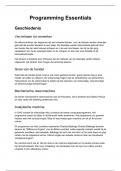B: Explore how the process of cell division in eukaryotic cells contributes to genetic variation
Assignment title: Cell division (Mitosis and Meiosis)
Preparing microscopic slides to observe and draw the stages of mitosis and meiosis.
Aim: To examine and depict the processes of mitosis and meiosis in this experiment, microscopic slides
will be made.
Requirements: Garlic roots, 1M hydrochloric acid, Toluidine blue stain, cold distilled water, 2 watch
glasses or small sample tubes, hollow glass block or small sample tubes, pipettes (and pipette fillers) or
small measuring cylinders, microscopic slides and coverslips, pair of fine forceps, filter paper or soft
tissue paper, microscope with magnification of x100 and x400, fine scissors and mounted needle.
Safety: 1M hydrochloric acid irritates the skin. It may irritate the eyes and respiratory system. Burns to
the skin may result. Put on lab coats, disposable gloves, and eye protection. Toluidine blue is toxic if
consumed and stains skin and clothing. It is dangerous if eaten and can irritate the skin and eyes.
Procedure:
1.Trim the root tips of several garlic roots that are in growth by about 5mm using a pair of fine
scissors. The ideal root tips to use are those that are white, have a firm, rounded end, and are
not becoming brown.
2.Submerge the root tips for precisely 5 minutes in a 2 cm3 tube of 1M hydrochloric acid in a hollow
glass block or small sample tube.
3.Submerge the root tips in a watch glass that has 5 cm3 of cold water in it. Let the root tips to dry
on filter paper or soft tissue paper for 4-5 minutes. At this time, the root tips will be fragile, so
proceed with caution.
4.Move one of the root tips onto a clear microscope slide.
5.Carefully break apart the root tip with a mounted needle. This method is referred known as
maceration. One tiny drop of toluidine blue should be added, and the solution should be stained
for two minutes.
6.Place a coverslip over the sample and firmly blot with several sheets of filter paper or tissue.
Distribute the root tip by softly tapping or pressing on the coverslip with the mounted end of a
needle.
7.Look at the sample under a 400x microscope and look for cells with discernible chromosomes. If
cells are overlapping, slide should be crushed once more between two wads of filter. There
should be no lateral movement of the coverslip.
8.Look for cells that divide and are created consistently. You should be able to detect blue
chromosomal groups against a lighter backdrop because toluidine blue stain turns DNA a deep
blue colour.
1|Page
, Results:
Mitosis
The picture shows a slide of garlic roots stained with toluidine blue being https://ib.bioninja.com.au/_Media/mitosis-3_med.jpeg
viewed at a magnification of x400.
Meiosis
The picture shows a controlled slide showing the stages of meiosis being
https://www.albert.io/blog/wp-content/uploads/2016/11/2809px-
viewed at a magnification of x100.
Meiosis_Stages.svg-1024x292.png
2|Page
, Limitations: The steps of mitosis cannot be clearly recognised, as can be seen in the microscopic image
of garlic roots dyed with toluidine blue (top left). This is due to the slide being excessively discoloured.
Another reason we might not be able to witness the stages of mitosis is because step 2 was intended to
be finished in a water bath according to the procedure, but we did not accomplish that. The root tip is
heated with acid, which separates the tissues into distinct cells. Plant cell walls made of cellulose are
adhered together by pectin’s like calcium pectate. When being exposed to hydrochloric acid, this
decomposes. Another reason we could not have been able to view the steps of mitosis clearly is if we did
not complete this stage adequately.
Chromosome: The small, thread-like component of the cell
known as the chromosome is where genes are stored and
transmitted down from one generation to the next. In the cell
nuclei of plants, animals, and people, chromosomes can be
discovered. One pair of sex chromosomes, 22 pairs of numbered
chromosomes (autosomes), and one pair of unnumbered
chromosomes make up the total of 46 chromosomes (XX or XY).
Since each pair of chromosomes has two copies—one from each https://www.genome.gov/sites/default/files/media/images/
tg/Chromosome.jpg
parent—children inherit half of their chromosomes from their
mother and half from their father. Chromosomes may be seen under a microscope due to the
disintegration of the nucleus during cell division. Chromosomes in living organisms come in a variety of
sizes and forms. While not always, bacteria often have one or two circular chromosomes. Humans are
among the animals and plants with linear chromosomes. The number of chromosomes in many plant
and animal species varies. For instance, although rice has 12 and Drosophila has 4, a dog has 39 pairs of
chromosomes. The 23rd pair of human chromosomes is known as the sex chromosomes, whereas the
first 22 pairs are known as autosomes. Those with two X chromosomes (XX) are more likely to be
female, while people with one X and one Y chromosome are more likely to be male (XY). Yet, there are a
number of deviations from the rules. There are various sizes for chromosomes. With almost 900 genes
compared to the Y chromosomes 55, the human X chromosome is more than three times bigger than
the Y chromosome. Because of the unusual chromosomal shape, DNA is tightly wrapped around proteins
known as histones. DNA molecules would be too big to fit inside cells without this packing. The entire
length, for instance, would be 6 feet if all of the DNA molecules in a single human cell were laid end-to-
end and freed from their histones.
Centromere: The centromere, which connects the two
chromatids, is one of a chromosome's structural
components (the daughter strands of a replicated
chromosome). The kinetochore, a structure to which the
microtubules of the mitotic spindle adhere, is connected
to the centromere. During the mitotic and meiotic cell
division processes, the spindle is what drags the
chromatids to the opposing ends of the cell. Each
https://www.genome.gov/sites/default/files/media/images/tg/
Centromere.jpg
3|Page












